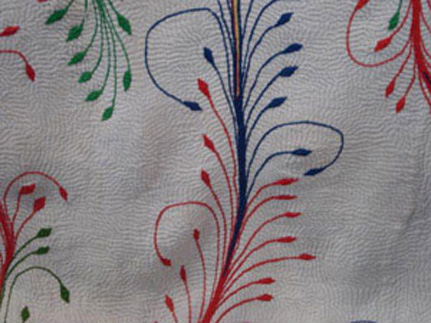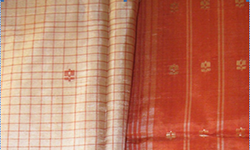
Art history/ Historiography, Crafts, Handlooms, Art, Design, Designers
Semiotic Study of The Motifs in Nakshi Kantha: The Tree Of Life, The Fish And The Lotus
Chowdhury, Ruhee Das
December, 2012
| Nakshi Kantha, the traditional needlecraft of Bengal, India, it displays a rich vocabulary of motifs. These motifs are deeply rooted in strong religious beliefs and underlay a strong symbolism. These motifs signify the desire for self expression and manifestation of the artisan’s aspirations. Nakshi Kantha was and is more than just a decorative quilt; they were the canvas for self-expression, their values and beliefs. Furthermore, use of these symbols display a keen desire to establish their own identity and position in the society and the urge to manifest their aspirations through religious symbolism, direct depiction and aesthetic display. Tree of life, Lotus and Fish have been three of the most popular and mindfully chosen motifs. This paper is an attempt to study the semiotics of these three motifs on Nakshi Kantha of West Bengal of early 19th century to late 20th century. Nakshi Kantha and its historical evidences - Undivided Bengal, now divided between India and Bangladesh has been known for their folk needle craft. East Bengal, now Bangladesh and West Bengal, now a state in East India have embroidered Nakshi Kantha (Naik, 1996) (Zaman, 1993). Kantha, the poor man’s quilt, displays extraordinary creativity, curious motifs and immense amount of patience (Dhameeja, 2004). Kantha has dominantly... |
This is a preview. To access all the essays on the Global InCH Journal a modest subscription cost is being levied to cover costs of hosting, editing, peer reviewing etc. To subscribe, Click Here.



